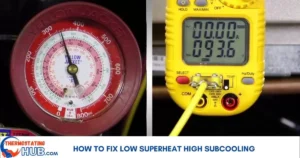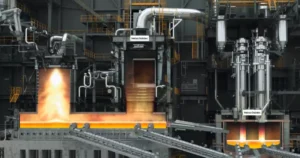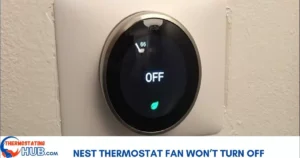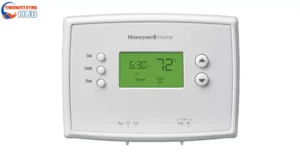If your furnace’s pilot light is shining bright, but the burners refuse to kick in, there could be a handful of reasons causing this snag.
In this article, let’s dive into the potential culprits behind the stubborn refusal of furnace burners to ignite, even when the pilot light is doing its job.
Possible culprits for the furnace burners staying dormant despite a lit pilot light encompass a range of gremlins – a gunked-up flame sensor, a misbehaving thermocouple, a limit switch that’s decided to take a break, a pilot orifice clogged with dirt, or a gas valve that’s not pulling its weight.
Tackling these issues might involve a good cleanup for some components, while others may demand a more drastic measure – replacing the troublesome part.
Dealing with furnace issues can be frustrating, especially when counting on cozy warmth. Regular maintenance is key to keeping these problems at bay. Consider scheduling a professional check-up for your heating system to ensure it’s in top-notch condition before the chilly weather sets in. After all, a little care now can save you from shivers later! ❄️
Possible reasons a Pilot light stays lit but burners won’t ignite

| Potential Issue | Solution |
| Thermostat Problem | Ensure the thermostat is set correctly |
| Dirty Flame Sensor | Give the flame sensor a thorough cleaning |
| Clogged Pilot Orifice | Clear any dirt from the pilot orifice |
| Faulty Thermocouple | Examine and inspect the thermocouple |
| Open Limit Switch | Investigate a potential issue with the limit switch |
Pro Tip: Keep your heating system in top shape by regularly checking for and addressing these potential issues. A little maintenance now can save you from chilly surprises later! ❄️
Thermostat issues
Before diving into troubleshooting why your furnace burners won’t ignite, take a moment to glance at your thermostat settings. Double-check that it’s in heating mode and the temperature is higher than the room temperature. Incorrect thermostat settings happen more frequently than you might realize, so it’s possible that the thermostat was simply set incorrectly. 🔍
Pro Tip: If the issue persists after adjusting the thermostat, it might be time to explore other potential causes like a faulty igniter or gas supply issues. Remember, patience and methodical checking can go a long way in getting your furnace back in action!
Dirty flame sensor
The most common culprit when your furnace pilot light is on but the burners won’t ignite is a dirty flame sensor. This sensor, or what I like to call the sensor rod, is a small piece of metal, straight or L-shaped, that checks for the presence of a flame from the burners. It serves as a safety device to prevent gas leaks in case of ignition failure.
As time goes by, and with the wear and tear associated with age, soot and residues from the combustion of gases can build up on the flame sensor. This accumulation makes it challenging for the sensor to detect flames properly.
In such a scenario, even though your pilot light is lit, the burners may not ignite because the sooty flame sensor can’t see the flame, so it won’t open the gas valve.
The good news is, that resolving this issue is relatively straightforward—cleaning the flame sensor. Check out the video below for guidance. Locate the flame sensor, detach it, and use something like a currency bill to rub away the dirt gently. Once cleaned, put it back in place and fire up the furnace.
If the problem persists, it might be necessary to replace the flame sensor.
Now, if the pilot light remains lit, but the burners won’t ignite another potential issue could be insufficient gas pressure reaching the burners, which brings us to the next topic. 🔧
Quick Tip: Regular maintenance, including cleaning the flame sensor, can help prevent these issues and keep your furnace running smoothly during colder months!
Read also: Why Is My Nest Thermostat Buzzing?
Dirty Pilot orifice
Another potential reason your furnace burners may refuse to ignite, despite the pilot light being on is a dirty pilot orifice.
When the pilot orifice becomes clogged with dirt, it fails to maintain the pilot generator at a temperature high enough to generate the required voltage for gas energization. This, in turn, hampers the internal gas valve from opening to allow gas onto the burner trays.
So, how can you identify if your pilot orifice needs cleaning?
Take a close look at the pilot burner flame. Signs of a dirty pilot orifice include
- A soft blue pilot burner flame
- Susceptibility to being easily blown around
- Yellow tips on the flame
If any of these indicators are present, it’s a clear signal that the pilot orifice is dirty and needs cleaning. Typically, a clean pilot orifice produces a sharp blue flame akin to a small blowtorch, with one lobe of the flame engulfing the pilot generator.
You’ll have to disassemble the pilot burner to clean the pilot orifice, usually accomplished by loosening the brass nut at its bottom. At this point, the pilot orifice will typically fall into your hand for cleaning.
Clean the pilot orifice using compressed air or a thin wire to eliminate dirt or debris.
Maintenance Tip: Regularly inspecting and cleaning the pilot orifice can enhance the efficiency of your furnace and ensure a reliable ignition process.
Bad Thermocouple
Another potential culprit behind your furnace burners refusing to ignite, even with a lit pilot light, could be a malfunctioning thermocouple.
The thermocouple consists of two separate metals joined together on one end, usually immersed in the pilot flame, where it senses heat before signalling the gas valve to open.
(Note: Specifics may vary depending on the model)
When the thermocouple detects heat from the flame sensor, it generates a small voltage, prompting the gas valve to open.
However, if the thermocouple is not correctly placed or aligned, it may fail to contact the pilot flame. It’s crucial to ensure that the thermocouple is fully immersed in the pilot flame, and if not, adjust its alignment accordingly.
In some instances, it might be the thermopile itself that’s faulty. Check whether the thermocouple produces sufficient voltage to keep the safety valve open. If the thermopile is indeed the issue, it may need replacement.
Quick Check: Ensuring proper alignment of the thermocouple and monitoring its voltage output can go a long way in maintaining the functionality of your furnace. 🔥
Open High Limit Switch
The final and undoubtedly significant issue is an open high limit switch. This switch serves as an additional safety feature, automatically shutting off the furnace in the event of overheating.
Several factors can contribute to furnace overheating, including blocked vents, dirty air filters, or a malfunctioning blower motor.
To troubleshoot, examine the high limit switch and assess its continuity. If there is no continuity, it’s likely defective, and replacing it may be necessary.
Alternatively, take the time to investigate the root cause of your furnace overheating. Blocked vents, dirty filters, or issues with the blower motor could be contributing factors.
If you find it challenging to determine the cause, I strongly recommend contacting a local HVAC technician to inspect your system thoroughly.
Expert Advice: Overheating issues can be complex, and professional assistance ensures a thorough diagnosis and proper resolution.
Future Innovations for Pilot Light Issues and Burner Ignition Challenges

Imagine a future where dealing with pilot light issues and burner ignition challenges becomes a breeze. We’re talking about innovations that will make you forget those frustrating moments when your pilot light is lit, but the burners won’t ignite.
1. Smart Ignition Systems:
Picture a system that learns from your heating patterns and adjusts the ignition process accordingly. Innovative technology removes the guesswork, ensuring your burners light up precisely when needed.
2. Predictive Maintenance Alerts:
Ever wish your heating system could warn you before a glitch? Future innovations might include predictive maintenance alerts, giving you a heads-up about potential pilot light issues so you can fix them before they cause a breakdown.
3. Instant Remote Troubleshooting:
Envision a scenario where you can troubleshoot and resolve pilot light problems remotely with a tap on your smartphone. Say goodbye to waiting for a technician and hello to quick, user-friendly solutions.
4. Self-Healing Ignition Systems:
What if your heating system could fix minor ignition glitches? Future innovations might introduce self-healing ignition systems, ensuring your burners light up smoothly without manual intervention.
5. Augmented Reality Maintenance Guides:
Imagine putting on augmented reality glasses, and voila! Step-by-step guides appear to help you troubleshoot and fix pilot light issues. Future innovations could make DIY maintenance a futuristic and user-friendly experience.
In this future landscape, pilot light problems and burner ignition challenges transform from headaches to hassles of the past. With these innovations on the horizon, heating your home becomes efficient and downright enjoyable.
Pros and Cons of a Pilot Light Lit But Burners Won’t Ignite Situation
| Pros | Cons |
| 1. Early Detection of Ignition Issues | 1. Potential for Delayed Heating |
| 2. Reduced Risk of Gas Buildup | 2. Inconvenience and Temperature Fluctuations |
| 3. Enhanced Safety Measures | 3. Possible Pilot Light Burnout |
| 4. Opportunity for DIY Troubleshooting | 4. Need for Professional Intervention |
| 5. Prevention of Unintended Gas Leaks | 5. Dependence on Manual Ignition Procedures |
Understanding where the pilot light is lit, but the burners won’t ignite provides homeowners with valuable insights. While it offers early detection and safety benefits, there are potential drawbacks, underscoring the need for prompt resolution to maintain optimal heating system performance. 🏠
Key Features to Address Pilot Light Lit But Burners Won’t Ignite Dilemmas
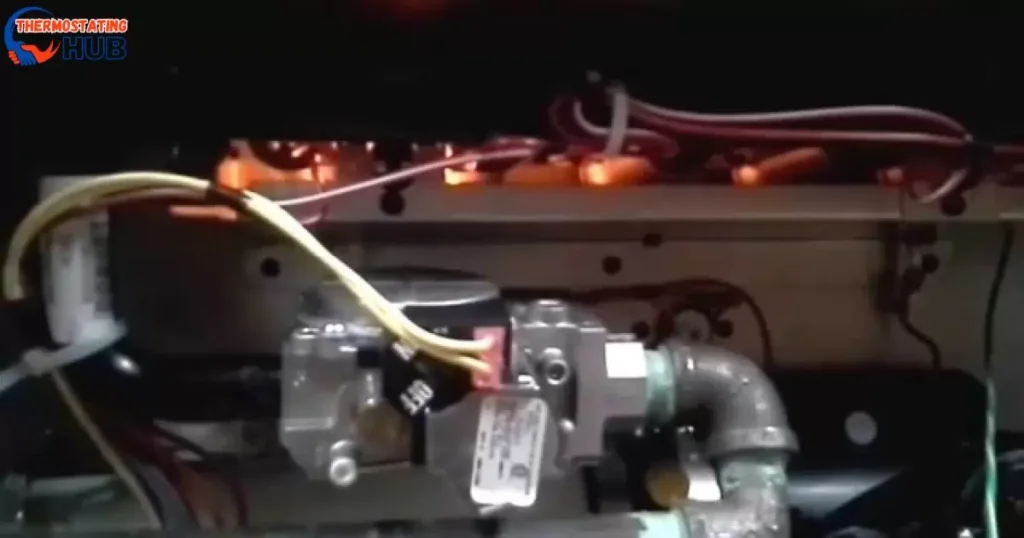
Navigating the situation where the pilot light is lit. Still, burners won’t ignite and can be a head-scratcher, but fear not – here’s a guide to illuminate critical features in addressing these dilemmas:
- Thorough Thermostat Check: Begin with a glance at your thermostat settings. Ensure it’s in heating mode and the temperature is set above the room temperature. Incorrect thermostat settings are a common culprit.
- Sooty Flame Sensor Woes: A dirty flame sensor can hinder ignition. Locate, detach, and use a non-abrasive material, like a currency bill, to clean accumulated soot. If issues persist, replacement may be necessary.
- Dirty Pilot Orifice Alert: A clogged orifice can hamper the pilot generator’s heat production. Watch for signs like a soft blue flame or yellow tips. Disassemble the pilot burner, and clean the orifice with compressed air or a thin wire.
- Troublesome Thermocouple Tackling: A malfunctioning thermocouple can disrupt the voltage needed for gas energization. Ensure it’s correctly placed and immersed in the pilot flame. Check for proper alignment and voltage output.
- High Limit Switch Insights: An open high limit switch, triggered by overheating, demands attention. Investigate potential causes like blocked vents or dirty filters. Test the switch for continuity; if defective, replacement may be necessary.
Answers To Key Questions
Why does my furnace pilot light light but burners won’t ignite?
Possible causes include a faulty gas valve, clogged burners, or a malfunctioning thermostat. Professional inspection is recommended for accurate diagnosis and repair.
Why does my pilot light work but no heat?
This issue may be due to a faulty thermocouple, gas valve problems, or a malfunctioning pilot assembly. Consult a professional for a thorough assessment and resolution.
Why is the pilot light not igniting on my boiler?
Potential reasons include a gas supply issue, a malfunctioning pilot assembly, or a faulty thermocouple. It’s advised to have a professional inspect and address the specific problem.
How do I know if my thermocouple is bad on my water heater?
Signs of a bad thermocouple include the pilot light going out frequently, difficulty keeping the pilot lit, or the water heater not producing hot water. Consider professional assistance for accurate diagnosis and replacement if necessary.
Final Thoughts
And there you have it, a comprehensive understanding of why furnace Pilot Light Lit But Burners Won’t Ignite.
The troubleshooting tips in this guide have proven helpful in resolving the issue and bringing warmth back to your home. Remember, if any uncertainty persists or you encounter challenges beyond the scope of this guide, feel free to reach out to an on-site technician for professional assistance.
Here’s to a well-functioning, cozy heating system all season long! Stay warm and comfortable. 🔥

I’m Dariel Campbell, the HVAC maestro at thermostatinghub.com. I’m not just about fixing air conditioners; I’m your cooling confidant. As a problem-solving storyteller, I dive into the world of HVAC with a passion for unraveling dilemmas. Join me on a journey where your comfort is the plot twist we’re all waiting for!
![Pilot Light Lit But Burners Won’t Ignite [Fixed]](https://thermostatinghub.com/wp-content/uploads/2023/12/pilot-light-lit-but-burners-wont-ignite-fixed.jpg)



